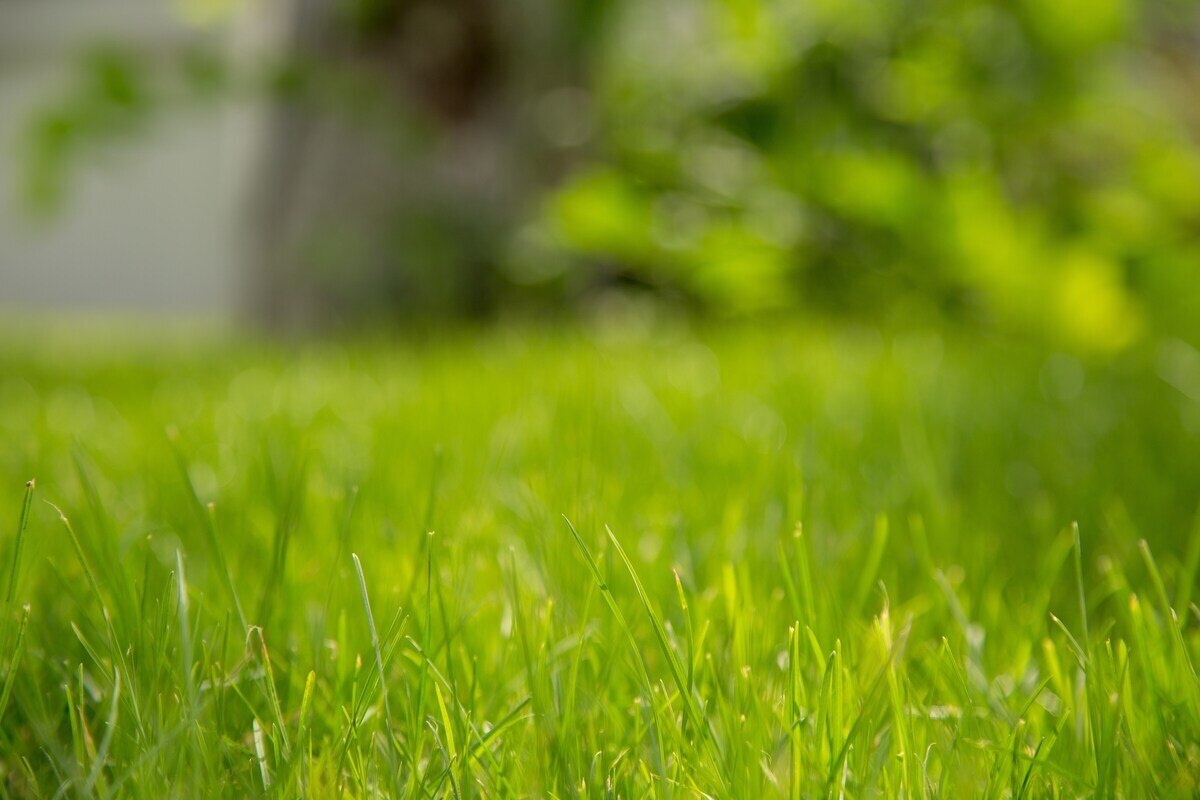
Central Florida is a beautiful place, blessed with a temperate climate, and studded with lakes and great lawns. Many people in Orlando are pursuing a beautiful lawn but simply don’t know where to start. They wonder, what type of grass should I plant to begin with? Start here, with these five best grass types for your home in Orlando.
You’ll have to weigh the pros and cons of the several different options for turfgrass in Central Florida. You’ll have to decide how often you’ll want to care for and maintain your lawn. Finally, you’ll have to decide what exactly the end goal is for your lawn.
1. St. Augustinegrass
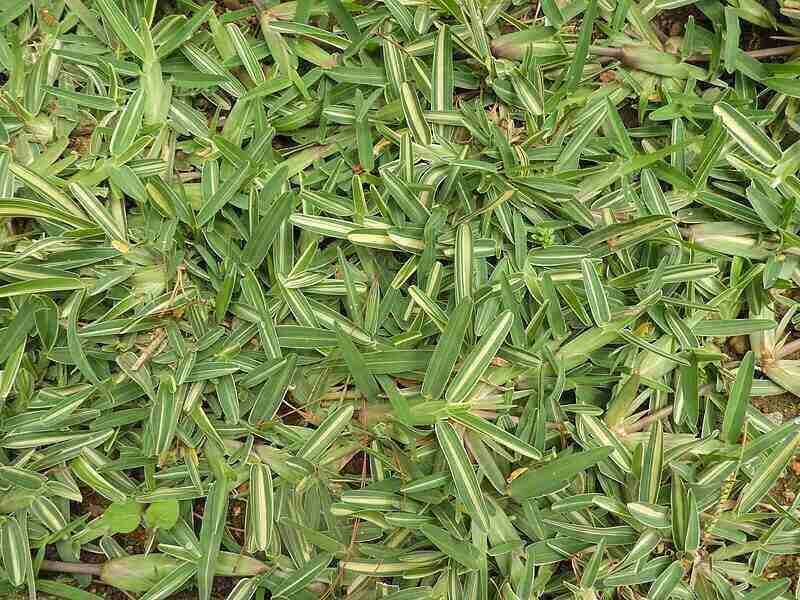
Photo Credit: Yercaud-elango / Wikimedia Commons / CC BY-SA 4.0
St. Augustinegrass is the most common grass in Orlando. It is accustomed to warm climates and grows easily on a variety of soils. It’s green to blue-green in color, and has more of an open growth habit than many other warm-season grasses (although this varies by cultivar).
This coarse-bladed grass can be beautiful, but expect to put in a bit of maintenance to keep it that way. St. Augustine requires around four fertilizer treatments per year plus consistent irrigation during hot weather. You’ll also need to mow weekly. St. Augustine tends to develop thatch, so dethatch regularly to control insects and maintain its health and beauty.
The best time to plant St. Augustinegrass in Orlando is either spring or fall to avoid extreme weather during establishment. There are also a few popular cultivars of St. Augustinegras, including Floratam, Palmetto, CitraBlue, and Seville. If you choose St. Augustinegrass, you’ll be in good company, as it’s a popular grass in the Orlando area.
- Classification: Warm-season grass
- Spreads by: Stolons
- Shade tolerance: Moderate
- Drought tolerance: Moderate; may require irrigation in hot weather or times with limited rainfall
- Foot traffic tolerance: Moderate
- Maintenance needs: High
- Mowing height: 3.5-4 inches for standard, 2.5 inches for dwarf cultivars
- Potential for diseases: Moderate to high; susceptible to fungal diseases, such as gray leaf spot, large patch, take-all root rot
Grass Plug Options:
– Seed Ranch St Augustine Seville Grass Plugs (2 Trays)
– Seed Ranch St Augustine Floratam Grass Plugs (2 Trays)
2. Bermudagrass
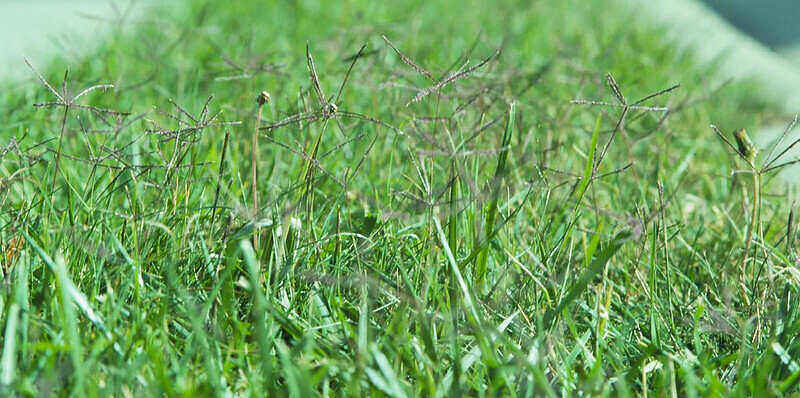
Photo Credit: Matt Lavin / Flickr / CC BY-SA 2.0
Bermudagrass is a high-maintenance turf that is well adapted to Central Florida’s climate and soils. Divided into common, improved common, and hybrid varieties, Bermudagrass is used on roadsides, football fields, golf courses, and high-traffic home lawns.
Bermudagrass, when maintained, is absolutely beautiful. It is also resilient, holding up well to foot traffic and hot climates. Most homeowners choose an improved common variety, as the hybrid varieties require too much maintenance for most home lawns. In Central Florida, fertilize a Bermuda lawn four to six times per year, mow once or twice per week, and irrigate as needed.
Bermudagrass can be established quickly and produces a vibrant and dense turf. Though it can be established successfully almost any time of year, the prime season is between April and September.
- Classification: Warm-season grass
- Spreads by: Stolons and rhizomes
- Shade Tolerance: Poor
- Drought Tolerance: High
- Foot Traffic Tolerance: High
- Maintenance Needs: High
- Mowing Height: 1-2 inches
- Potential for Diseases: High
Grass Seed Options:
– Pennington Bermudagrass Bare Spot (5 lb. bag)
– Pennington Smart Seed Bermudagrass Mix (8.75-lb. bag)
– Scotts Turf Builder Bermudagrass (10-lb. bag)
– Hancock Seed Co. Bermudagrass (50-lb. bag)
3. Zoysiagrass
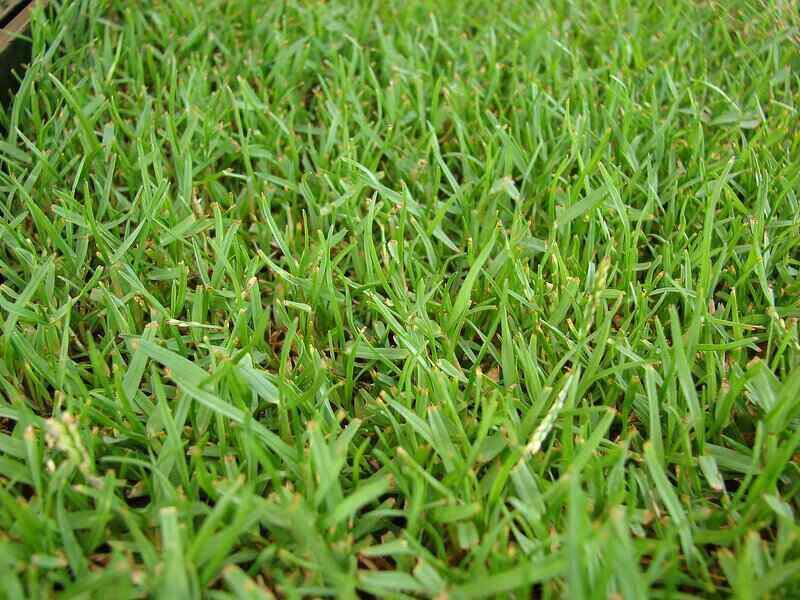
Photo Credit: Forest and Kim Starr / Wikimedia Commons / CC BY 3.0 US
Many people consider Zoysiagrass to be the most beautiful type in the South. However, it’s not very common, at least in Orlando. Other than its aesthetics, the benefits of Zoysiagrass are its excellent wear resistance and slow rate of growth, which means less time behind the lawn mower compared to other warm-season grasses.
Zoysia’s slow growth rate has a downside, too: It establishes slowly (1-3 seasons) and recovers slowly from damage. It prefers frequent fertilization in small doses as well as moderate irrigation. It has low drought tolerance and will recover slowly from drought damage if it occurs.
It’s highly recommended that you hire lawn care professionals if you want to plant Zoysiagrass. If you can maintain it, Zoysiagrass is brilliant and is sure to bring envy to your neighborhood.
- Classification: Warm-season grass
- Spreads by: Stolons and rhizomes
- Shade Tolerance: Low to moderate
- Drought Tolerance: Moderate, but goes brown and dormant quickly in drought conditions; some cultivars tolerate drought better than others (El Toro, Palisades)
- Foot Traffic Tolerance: High, but slow to recover from wear
- Maintenance Needs: Moderate
- Mowing Height: 1-2.5 inches
- Potential for Diseases: Low to moderate; dollar spot, rust, large patch
Grass Plug and Seed Options:
– Zoysia Plugs (50 Large Grass Plugs)
– Zoysia Plugs (50 Full & Lush Grass Plugs)
– Zoysia Plugs (100 Plugs)
– Zoysia Emerald Grass Seeds (1/8 lb. of seeds)
– Zenith Zenith Grass Seeds (1/8 lb. of seeds)
4. Bahiagrass
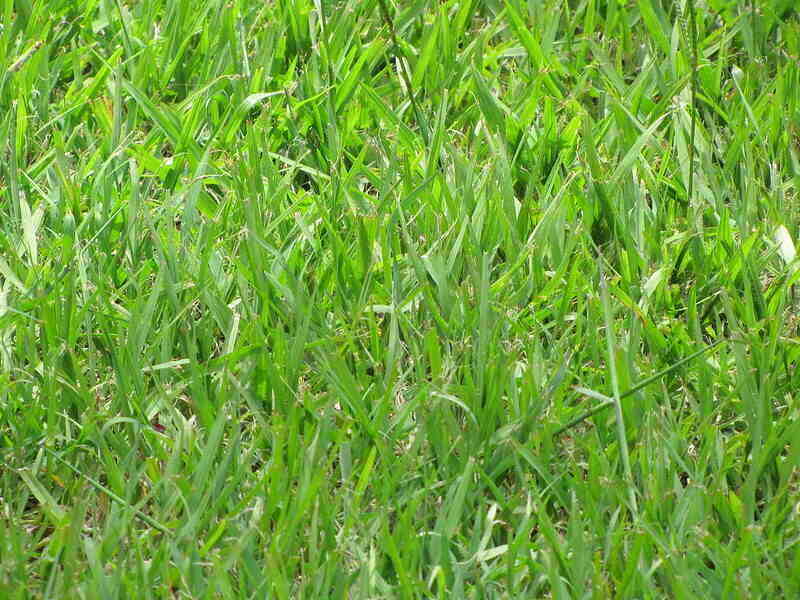
Photo Credit: Forest and Kim Starr / Flickr / CC BY 2.0
In Orlando, bahiagrass is the second most common turfgrass — and for good reason. It started out as a pasture grass but is now also used in residential lawns or on large acreages where a low-maintenance, low-input turf is needed.
Bahiagrass tolerates most soils but does best in acidic, sandy loam. (This is not a grass for alkaline soils.) It’s drought tolerant and requires low levels of fertilization and little or no supplemental water (as long as you don’t mind it going dormant in an extended drought). Bahiagrass requires full sun and has no tolerance for shade.
One big downfall is that it often turns yellow/brown in colder weather. It requires weekly mowing during the hot summer months but not as much maintenance otherwise. Bahiagrass is an excellent choice for DIYers who don’t want to spend too much time primping their lawn.
- Classification: Warm-season grass
- Spreads by: Rhizomes
- Shade Tolerance: Low
- Drought Tolerance: High; will turn brown and dormant in an extended drought
- Foot Traffic Tolerance: Low
- Maintenance Needs: Low, but plan to mow seedheads weekly during the growing season
- Mowing Height: 3-4 inches
- Potential for Diseases: Low
Grass Seed Options
Pensacola Bahiagrass:
– Scotts Turf Builder Pensacola Bahiagrass (5 lb. bag)
– Hancock Seed Co. Pensacola Bahiagrass Seed (5 lb. bag)
– SeedRanch Pensacola Bahiagrass Seed (10 lb. bag)
Argentine Bahiagrass:
– Scotts Turf Builder Argentine Bahiagrass (10 lb. bag)
– Hancock Seed Co. Argentine Bahiagrass Seed Mix (25 lb. bag)
5. Centipedegrass
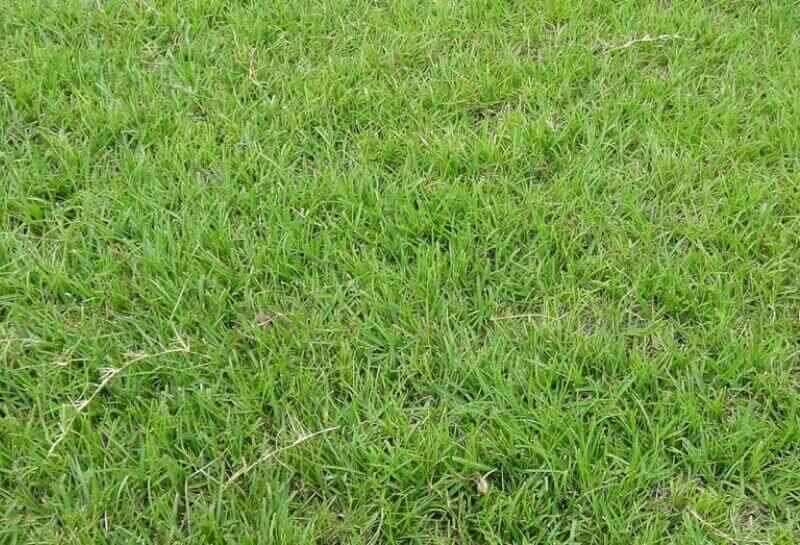
Photo credit: Michael Rivera / Wikimedia Commons / CC BY-SA 4.0
Centipedegrass does well in Central Florida, but it is actually the most common grass for homes in the Panhandle. It’s lighter in color, slow-growing, and doesn’t need much fertilization. Overfertilizing centipedegrass reduces its cold tolerance and leads to long-term problems and decline.
The primary benefit of centipedegrass is that its maintenance requirement is minimal. On the negative side, it’s not the prettiest turf and is susceptible to illness from certain plant parasites, namely nematodes.
- Classification: Warm-season turf grass
- Spreads by: Stolons
- Shade Tolerance: Low to moderate
- Drought Tolerance: Moderate; will turn brown in drought-induced dormancy
- Foot Traffic Tolerance: Low
- Maintenance Needs: Low (compared to other turfgrasses)
- Mowing Height: 2 inches
- Potential for Diseases: Moderate
Grass Seed Options:
– Gulf Kist Coated Centipedegrass Seeds (1 lb.)
– Scotts EZ Seed Patch and Repair Centipedegrass (3.75 lbs.)
– TifBlair Centipedegrass (5-lb. bag)
– Pennington Centipedegrass and Mulch (5-lb. bag)
How to Choose the Best Grass for Your Orlando Lawn
Maintenance
When picking out the grass for your lawn, maintenance should be one of the first things to consider. How much time and work are you willing to put into your yard? Some grasses require a bit more work, like fertilizing and watering, than others. There are also certain grasses that are more susceptible to diseases. Consider the level of maintenance before picking out your grass.
Low-maintenance grass:
- Centipedegrass, bahiagrass
Moderate-maintenance grass:
- Zoysiagrass
High-maintenance grass:
- St. Augustinegrass, Bermudagrass
Soil and Salt
Soil types and salt tolerance should be the next things you consider when choosing your grass. Florida has a lot of sandy and clay soils, and many locations deal with salt spray or salty water. Your soil type and the level of salt in your water will play a large role in which grasses will grow the best.
- St. Augustinegrass is well adapted to most soils in Florida and has a good tolerance for salt.
- Bermudagrass is also well adapted to most soils in Florida. It has excellent salt tolerance.
- Zoysiagrass will grow well in a majority of soil types. Some cultivars, such as Empire, grow well in both clay and sandy soils. Salt tolerance is generally good but varies by cultivar.
- Bahiagrass was originally used on acidic, sandy soils as a pasture grass. Does not have good salt tolerance.
- Centipedegrass does well in acidic, infertile soils where the pH level is 4.5-6.5. Does not have good salt tolerance.
Foot Traffic
If you’re someone who enjoys hosting outdoor gatherings and parties, you’ll want a turf that can handle all that traffic. Some grasses are great for this type of activity and recover from wear on their own. Others are better suited for leisure activities that won’t put too much stress on the turf.
Grasses for high traffic:
- Bermudagrass, Zoysiagrass
Grasses for low traffic:
- St. Augustinegrass, centipedegrass, bahiagrass
Bring in Reinforcements
Picking out and planting the best grass for Central Florida is one of the first and most exciting steps to building that dream lawn. All the long hours spent working on your lawn can be strenuous. Don’t let the work discourage you from realizing your dream. Call an Orlando lawn care professional to lighten your lawn care load so you can get back to enjoying your yard.
LawnStarter participates in the Amazon Services LLC Associates Program, an affiliate advertising program. LawnStarter earns revenue from products promoted in this article.
Main Image Credit: rovenimages.com / Pexels